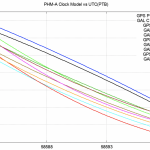Securities regulators recently approved a plan to improve the tracking of financial trades by creating a single, comprehensive database that, among other things, incorporates tightened clock synchronization standards.
Securities regulators recently approved a plan to improve the tracking of financial trades by creating a single, comprehensive database that, among other things, incorporates tightened clock synchronization standards.
The consolidated audit trail, or CAT, lays out how customer and deal information will be recorded, reported and maintained throughout the complete lifecycle of all orders and transactions in the U.S. equity and options markets. The data would have to be recorded contemporaneously with the order events and reported to a central repository by 8:00 a.m. Eastern Time on the day following the event. The 340-page plan, which was published in the Federal Register on November 23, also lays out a set of clock synchronization standards and a plan for determining updates to those standards that industry will have to implement.
"What the SEC is saying is that timing is becoming more and more critical in the financial industry," said Andrew Bach, a financial timing expert and a member of the Advisory Board of the Resilient Navigation and Timing Foundation.
The markets generally have been moving faster and faster for the last 300 years, said Bach, and "it’s really gotten exciting in the last few decades." With Twitter feeds and instantaneous news driving microsecond decisions it is hard for financial regulators to keep the markets fair.
"The SEC is in a position of saying: ‘How do I know if someone inappropriately traded ahead of the market because they knew something that no one else did, when the difference between trading ahead of the market and the general dissemination of news is now measured in a fraction of a second?" Bach explained.
In determining the standards, the SEC distinguished between different operators in the market, demanding more of stock exchanges and other venues like alternative trading systems (ASTs) and electronic communication networks, also called ECNs. ECNs are automated systems that match buy and sell orders for securities so that major brokerages and individual traders can ditch the middlemen and trade directly between themselves.
These types of operations venues will be required to synchronize the business clocks for their electronic systems to, at a minimum, within 100 microseconds of the time maintained by the National Institute of Standards and Technology (NIST), consistent with industry standards.
Broker-dealers, that is traders like Merrill Lynch or E*Trade, must synchronize their electronic systems’ clocks to within 50 milliseconds of NIST time.
"The exchange is held to a tighter standard," said Bach.
Overall the timing requirements will enable regulators to better sequence the placement of, and action on, orders across multiple exchanges, the SEC plan decision said.
"The only way for them to regulate effectively is to know when events really happen with a high degree of precision," said Bach. "And whatever that precision is, it’s going to be even more precise next year and the year after — and the year after that."
In fact, for timing professionals the most interesting part may be what comes next. The SEC is requiring annual reviews of clock technology to "ensure that clock synchronization standards remain as tight as practicable in light of technological developments."
As part of those reviews the SEC wants the industry to determine, and report back on, whether tougher standards are in order.
The speed of information and increasing number of information channels forces the SEC and other regulators to determine some sort of sequence of events, explained Bach, "to figure out — did someone trade ahead? Did someone trade behind?
"That drives them," said Bach, "to write tighter and tighter numbers. Whatever number you find in the documents I think the one thing we can be confident of — it’s going to be a much lower number a year or two ahead from now."
Previously, Inside GNSS had reported on how financial networks were shifting to GPS-Stamped Precise Time.






